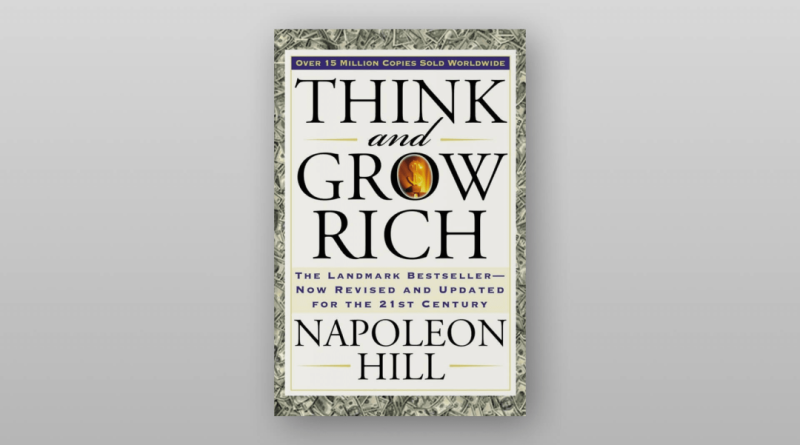Book Review: Think And Grow Rich
Think and Grow Rich is another financial classic. You may have read my review on Rich Dad Poor Dad (Click here if you want to take a look), and it is the second book I have read on finance during the COVID-19 pandemic.
Again, this is a personal development and self-help book by Napoleon Hill, first published in 1937. As stated previously, the book is widely considered a classic in the genre. It has significantly impacted the success and mindset of countless individuals, including myself.
Born from an unexpected encounter with Andrew Carnegie, Hill’s journey began with a revelation, a hidden force within the human mind. While the specifics of this revelation remained unpublished, it ignited Hill’s two-decade-long quest to uncover the Law of Success philosophy, revealing thirteen essential steps to achieve prosperity in all facets of life.
The thirteen steps are split into chapters, so I will summarise each chapter below.
Desire: The Starting Point of All Achievement
Hill emphasizes that mere wishes won’t bring riches; one must possess a burning desire, belief, and a clear purpose. The chapter outlines six steps for transforming desires into reality.
Faith: Visualization of and Belief in the Attainment of Desire
Through affirmations and repeated suggestions, one can develop the emotion of faith, a crucial element in turning desires into tangible outcomes.
Auto-suggestion: The Medium for Influencing the Subconscious Mind
Hill delves into the power of self-directed communication and stimuli to shape thought patterns conducive to manifesting desires.
Specialized Knowledge: Personal Experiences or Observations
General knowledge won’t suffice; Hill stresses the importance of organizing and applying specialized knowledge for success, advocating forming a “Master Mind” group.
Imagination: The Workshop of the Mind
Hill explores the role of imagination, distinguishing between the synthetic and creative modes and elucidating how it shapes desires into reality.
Organized Planning: The Crystallization of Desire into Action
A definite, practical plan must be formed and executed to translate desire into its physical or monetary equivalent.
Decision: The Mastery of Procrastination
Procrastination and indecisiveness hinder success; Hill advocates quick, firm decision-making and resistance to external influences.
Persistence: The Sustained Effort Necessary to Induce Faith
Cultivating persistence, desire, and willpower is essential for overcoming obstacles and ensuring success.
Power of the Master Mind: The Driving Force
Hill introduces the concept of Master Mind groups, emphasizing The Mystery of Sex Transmutation. He explains that sexual energy can be channelled into creative pursuits, contributing to personal and financial growth.
The Subconscious Mind: The Connecting Link
The subconscious acts as an intermediary, translating mental impulses into their spiritual and physical equivalents.
The Brain: A Broadcasting and Receiving Station for Thought
Hill explains how the brain, like a broadcasting station, can pick up thought vibrations, influencing the mind’s receptivity.
The Sixth Sense: The Door to the Temple of Wisdom
The Sixth Sense, the subconscious faculty, serves as the apex of Hill’s Law of Success, allowing communication with Infinite Intelligence.
How to Outwit the Six Ghosts of Fear
It would be best if you conditioned your mind to embrace the underlying philosophy to implement the thirteen success principles outlined. Initiating this mental preparation involves a primary step – a thorough examination, analysis, and comprehension of the three adversaries one must overcome: indecision, doubt, and fear. This chapter elucidates and discusses strategies to overcome the six fundamental fears, often concealed in the subconscious, impeding individuals’ quest for prosperity. These fears encompass poverty, criticism, ill health, loss of love, ageing, and mortality.

Think and Grow Rich” has been praised for its motivational content and timeless principles; it has also faced criticism for its lack of specific, actionable steps and occasional reliance on anecdotal evidence. Some readers may find the language and examples somewhat dated, reflecting when they were written. There are, however, two versions of the book, and there is a more updated option if that is what’s required. I, however, opted for the classic, and I advise for the first read that people do the same. The book states that it is more of a textbook and should be reread multiple times, which I agree with.
This book can and has been the beginning of a positive journey for many people, so it may be time to start yours. Just give it a go!

